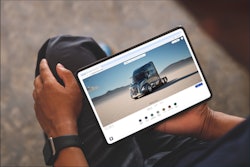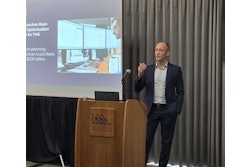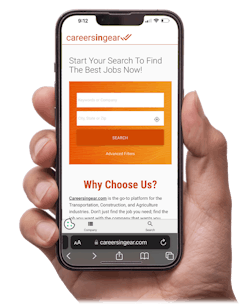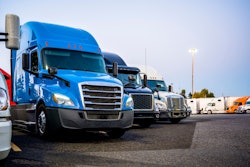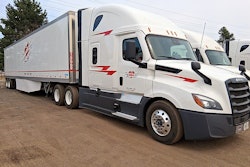Risk heightens for trucking companies and others in the logistics space around the holidays, from spikes in cargo theft and extreme weather to more time on the road, leading to driver fatigue.
Data and AI are at the forefront of solving those challenges, according to a panel of experts that recently joined Samsara for a virtual roundtable discussion about solving challenges associated with the logistics holiday season.
Panelists shared how AI and data help with the labor shortage, demand planning and forecasting, extreme weather and cargo theft, among other things. But the biggest return on investment in AI is an improvement in driver safety – not only from a reduction in the costs associated with accidents, but those in the domino effect like insurance costs, said Samsara Co-founder and CEO Sanjit Biswas.
“This is really about data. Can you understand what is the risk on the road or as part of the operation … and essentially identify anomalies,” Biswas said.
He said companies can use anomaly detection by using AI to sift through data to understand road risk.
“If you take the camera images and you understand following distance, that tends to be a good leading indicator of risk. If a driver has a habit of tailgating, they're very likely to rear end a vehicle at some point during their shift,” Biswas added. “So that's an example of where you can ingest a lot of data but then process it with AI, because there's no way you can hire teams to look at this; it’s just way too much data. If you can process it with AI, you can surface the risk signals and either share it with underwriters to get more competitive rates, or you can just embed it in your operations to go and change the outcomes,” he said.
Samsara has dash cameras that run AI risk models at the edge and in the cloud, and Biswas said more and more trucking companies are adopting this type of technology.
Cameras in trucking have historically been a hot button issue with drivers. They have perceived them as invasions of privacy or as a “big brother” watching over their shoulder, waiting to slap them on the hand for wrongdoing.
But Biswas said Samsara is now selling more dual-facing dash cameras than forward-facing only.
Customers using dual-facing dash cameras saw an aggregate crash-rate reduction more than two times greater than those with front-facing cameras alone, according to Samsara’s Safety Report released last week. Crash rates for Samsara customers that had implemented the vendor’s AI safety solution decreased by 37%, while customers that have implemented the solution over 30 months saw an even greater decrease of 73%.
Wholesale food distributor United Natural Foods Inc. is one of the companies that has implemented Samsara's AI safety solution.
“The main challenge is trust,” said Tehzen Chadwick, senior vice president of safety at UNFI.
She said to implement AI cameras at scale, companies have to properly handle change management by addressing the use of the cameras with drivers, helping them understand the why behind it with use cases and education.
“I think as drivers have started to understand how this technology is used, how it's valuable to them, how it protects them, the adoption rates have really started to skyrocket,” Biswas said.
That’s because accident rates come down north of 50%, he said, which is enough to turn heads. But he added that the penetration rate is still pretty low.
“If you think about the number of commercial vehicles on the road … about half of them have some kind of GPS tracking or telematics system, but maybe only 10% to 20%, maybe around 15%, have a video telematics or video safety solution,” Biswas said. “So, we see that trend is moving very quickly towards adoption because of that kind of practical value of being able to cut your accident-related costs in half.”
One of the biggest challenges the AI-based video telematics solution solves is fatigue-related incidents.
[RELATED: Video is only part of an overall safety system]
Biswas said technologies have historically not been able to monitor fatigue because a lot of data is needed. That’s where AI comes in to detect things like yawning, stretching, lane diversions, etc. and alerts drivers.
“From an operations perspective, when we talk about reduction in employee fatigue, historically, without the data and without these tools, we were not able to always articulate or identify … the exact type of onerous activities that all of our associates were doing throughout the day,” Chadwick said.
Now, AI can identify the data and address the risk, she said. And the AI makes a difference over time, compounding data and getting better, Biswas added.
“We see that with things like fatigue. We see it around driver safety in general (distraction). You even see it in things like fuel consumption,” he said. “So there's a way to change real-world behaviors using data in a very practical way.”

